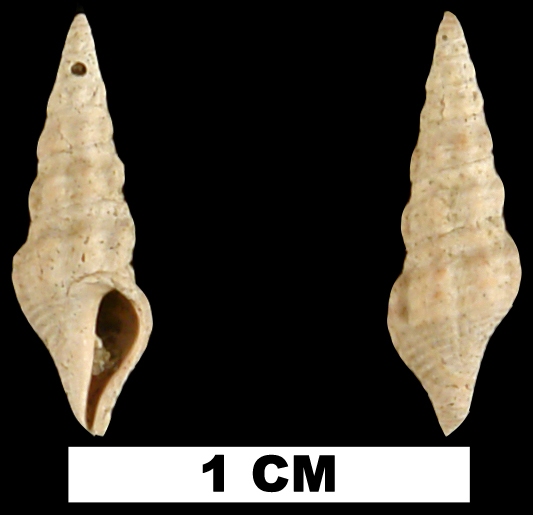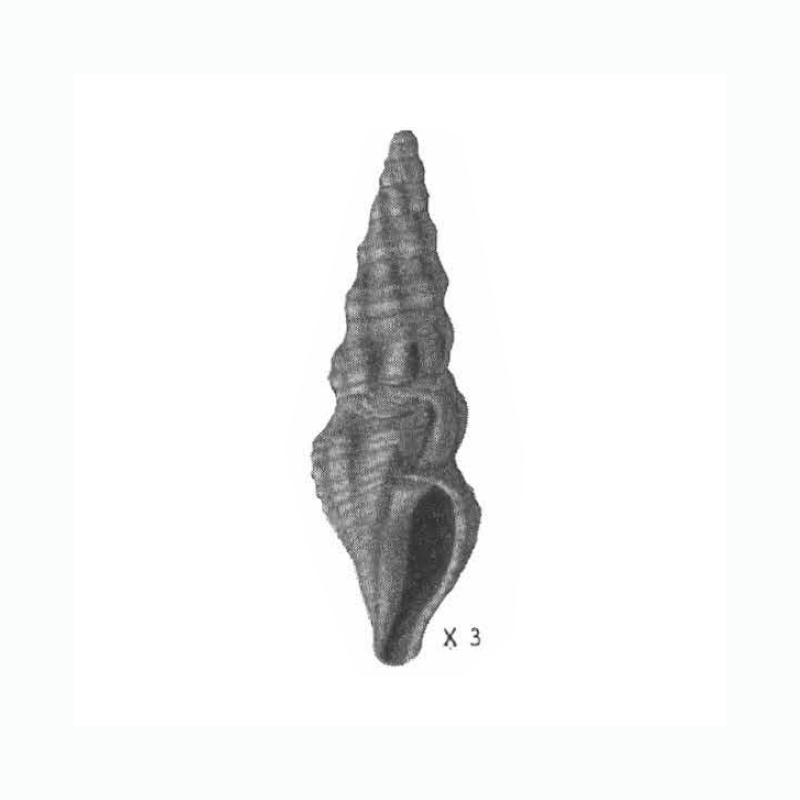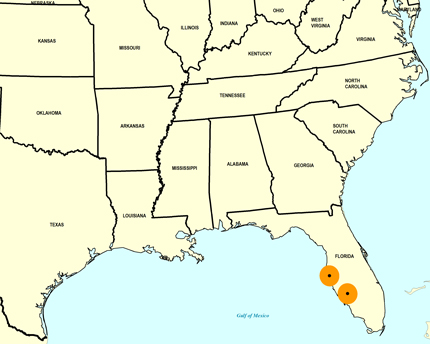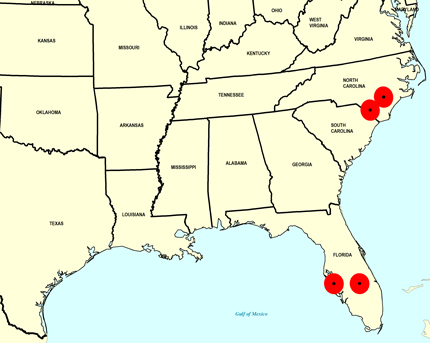
Compsodrillia drewi
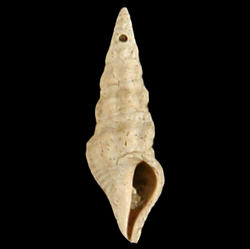
- Phylum: Mollusca
- Class: Gastropoda
- Order: Neogastropoda
- Family: Pseudomelatomidae
- Genus: Compsodrillia
- Species: Compsodrillia drewi (Gardner, 1948)
Geological Range
Late Pliocene to Early Pleistocene; Extinct.
Paleogeographic Distribution
Southern Florida to North Carolina.
Remarks
Original Description (from Gardner, 1948, p. 267):
"Shell small, slender; spire high, acutely tapering, the whorls closely appressed·. Apex somewhat decorticated so that it is difficult to differentiate conch and protoconch. Possibly an axially sculptured nuclear whorl in addition to the 3.25 smooth turns. Each volution of adult conch sculptured with 8 broadly rounded, undulating, protractive ribs, for the most part continuous, persisting on the earlier whorls from suture to suture but on the later whorls becoming obsolete at the anal fasciole and on the body expiring before reaching the pillar. Intercostal areas hollowed out and depressed below the average level of the shell. Spirals broad, somewhat rounded on top, fairly prominent at the intersection with the costae but almost or altogether obsolete in the intercostal spaces; 2 or 3 on the earlier whorls 3 or 4 on the later whorls of the adult. Base of the body whorl and the pillar sculptured with lower, more angular, more closely set lirations. Anal fasciole depressed, marked by the absence of any sculpture except incrementals. Sinus narrow, rather deep, placed closer to the periphery than to the posterior suture. Aperture ovate-elongate. Outer lip flaring slightly, simple. Columella concave, calloused, though the callus does not extend beyond the pillar. Canal moderately long for the genus, slightly recurved and emarginate anteriorly.
Dimensions: Holotype height, 13.8 mm.; maximum diameter, 4.3 mm. Paratype height, 8.7 mm.; minimum diameter, 3.0 mm.
Type and only locality: 1.5 miles northwest of Magnolia, Duplin County, N.C. Duplin marl.
Holotype and paratype: U.S.N.M. 114020.
The characteristic features of this rare species are the slender tapering outline, the undulatory axial sculpture, and the broad spiral lirations, confined for the most part to the summits of the costae and the anterior portion of the shell.
I have the pleasure of naming this interesting form in honor of Dr. Gilman Arthur Drew, formerly of the University of Maine, who furnished much valuable and trustworthy data on the Mollusca of the North Atlantic coast."
To access this description in its original formatting through the USGS, click here.
Stratigraphic Occurrences
- Early Pleistocene
- Caloosahatchee Formation (S. FL)
- Late Pliocene
- Duplin Formation (NC)
- Tamiami Formation (Pinecrest Beds) (S. FL)
